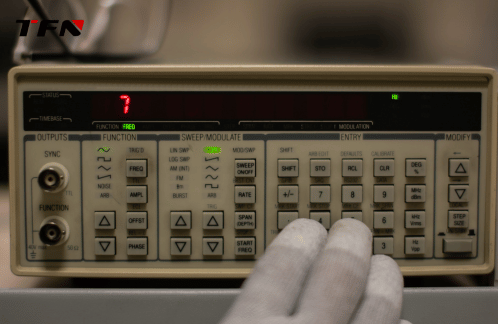Analysis of the Core Differences Between Vector Signal Sources and RF Signal Sources
In wireless communication test and R&D, both vector signal sources and RF signal sources are essential instruments. Despite their similar names, they differ significantly in their principles, functions, and application scenarios. This article will delve into the differences between these two signal sources to help engineers make the right choice based on their specific needs.
Basic Principles and Working Mechanisms
Principles of RF Signal Sources
RF signal sources primarily generate pure, high-frequency continuous wave signals. Their core goal is to provide a sinusoidal signal with precisely adjustable frequency and power. The output signal can be expressed as:
V(t) = Acos(2πft + ϕ)
Where A is the amplitude, f is the frequency, and ϕ is the initial phase. Traditional RF signal sources focus on frequency and amplitude stability and accuracy and typically lack modulation capabilities or only support simple analog modulation (such as AM/FM/PM). Their internal structure typically consists of a reference oscillator, frequency synthesizer, power amplifier, and attenuator, with phase-locked loop technology ensuring frequency accuracy.
Principles of Vector Signal Sources
Vector signal sources are significantly more complex. It not only possesses all the basic functions of an RF signal source, but more importantly, it can generate complex digitally modulated signals. The vector signal source uses quadrature modulation (I/Q modulation) to modulate baseband digital signals onto an RF carrier. Its mathematical model can be expressed as:
s(t)=I(t)cos(2πfct)−Q(t)sin(2πfct)
Where I(t) and Q(t) are two orthogonal baseband components, and fc is the carrier frequency. This structure allows precise control of the signal's amplitude and phase, generating complex modulation waveforms used in modern communication standards such as QPSK, 16QAM, and OFDM. Its integrated high-speed digital-to-analog converter and digital signal processor enable real-time generation and processing of complex baseband waveforms.
Core Function Comparison
RF Signal Source Functions
High-Purity Continuous Wave Output: Focuses on providing a single frequency signal with low phase noise and high frequency stability.
Simple Analog Modulation: Supports basic modulations such as AM, FM, and PM.
Power Sweep and Frequency Sweep: Suitable for frequency response testing of components such as amplifiers and filters.
Vector Signal Source Functions
Complex Digital Vector Modulation: Supports modulation formats of nearly all modern communication standards (such as 5G, WiFi, and Bluetooth).
Baseband Signal Generation and Editing: Built-in arbitrary waveform generator allows for custom or pre-set complex digital modulation waveforms.
Simulation of Channel Fading and Impairment: Capable of simulating real wireless channel characteristics such as multipath fading and Doppler shift for receiver performance testing.

Typical Application Scenarios
RF Signal Source Applications
RF signal sources are suitable for scenarios requiring high signal purity but without the need for complex modulation:
Component Characteristic Testing: Such as frequency response, gain compression, and third-order intercept point testing of filters and amplifiers.
Classic Receiver Testing: Providing local oscillator signals for superheterodyne receivers or performing sensitivity testing.
Educational Demonstration and Calibration: Used for basic teaching or as a standard signal source to calibrate other instruments.
Applications of Vector Signal Generators
Vector signal generators are suitable for R&D and verification stages that require simulation of real-world communication signals:
Communication System R&D and Certification: Generates signals compliant with 3GPP, IEEE, and other standards for testing the transmit and receive performance of base stations and mobile phone chipsets.
Receiver End-to-End Performance Testing: Tests the bit error rate of receivers under complex modulated signals and simulates performance in real-world channel environments.
Radar and Electronic Warfare Signal Simulation: Generates complex pulse radar signals or deceptive signals for electronic countermeasures.
Conclusion
The choice between a vector signal source and an RF signal source ultimately depends on the test requirements.
Features |
RF Signal Source |
Vector Signal Source |
Core Output |
Pure Continuous Wave |
Complex Modulated Vector Signals |
Key Technologies |
Frequency Synthesis, Low Phase Noise |
I/Q Modulation, Digital Signal Processing |
Main Applications |
Component Testing, Basic Calibration |
Communication System Development, Receiver Performance Verification |
If your work is limited to frequency response testing, component calibration, or basic teaching, a high-performance RF signal source may be more cost-effective. However, if you need to develop or test modern communications equipment and simulate complex real-world signals, a vector signal source will be an irreplaceable tool in your laboratory.
